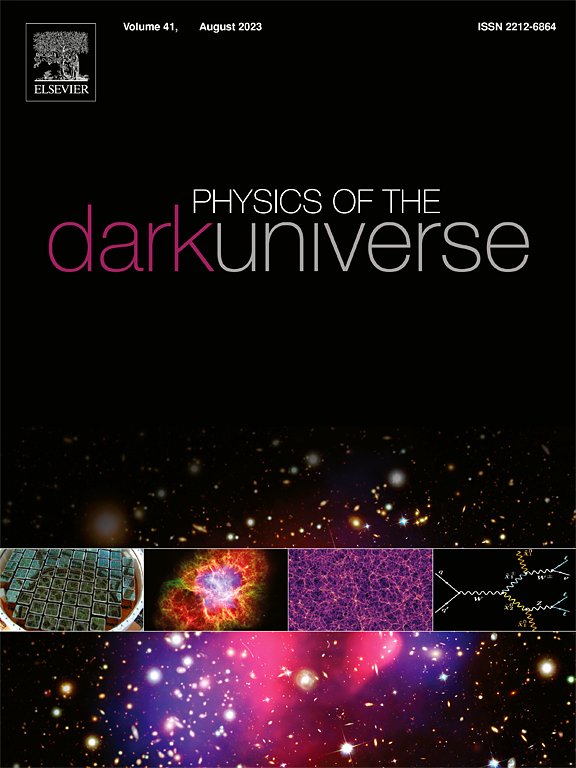Traversable wormholes satisfying the Karmarkar condition in f(R) gravity with deflection angle of light
IF 6.4
2区 物理与天体物理
Q1 ASTRONOMY & ASTROPHYSICS
引用次数: 0
Abstract
In this present work, we introduce a completely new wormhole shape function satisfying the Karmarkar condition that constructs static, spherically symmetric wormhole solutions in the framework of modified gravity. The proposed shape function generating wormholes are asymptotically flat by satisfying the essential conditions. Here, we consider two well-known gravity models, namely the exponential gravity model, and the Tsujikawa gravity model, interestingly, the reported shape function generating wormholes are static, and spherically symmetric structures in the circumstances of the non-existence theorem and supported by the non-exotic matter in those gravity models corresponding to the suitable values of free parameters. Moreover, the non-exotic matter supporting wormholes are in the equilibrium state by satisfying the ToV-equation in both the considered gravity models. We also study the weak gravitational lensing in the spacetime of the present wormhole structures and estimate the deflection angle of light that decreases for increasing values of the impact parameter.
具有光偏转角的f(R)重力下满足Karmarkar条件的可穿越虫洞
在本文中,我们引入了一个全新的虫洞形状函数,它满足Karmarkar条件,在修正的f(R)引力框架下构造静态的球对称虫洞解。所提出的生成虫洞的形状函数在满足基本条件的情况下是渐近平坦的。在这里,我们考虑了两种著名的f(R)引力模型,即指数f(R)引力模型和Tsujikawa f(R)引力模型,有趣的是,所报道的产生虫洞的形状函数是静态的,在不存在定理的情况下是球对称结构,并且由f(R)引力模型中的非奇异物质支持,对应于合适的自由参数值。此外,在考虑的f(R)引力模型中,支持虫洞的非外来物质通过满足tov方程而处于平衡状态。我们还研究了现有虫洞结构在时空中的弱引力透镜效应,并估计了光的偏转角随着冲击参数的增大而减小。
本文章由计算机程序翻译,如有差异,请以英文原文为准。
求助全文
约1分钟内获得全文
求助全文
来源期刊

Physics of the Dark Universe
ASTRONOMY & ASTROPHYSICS-
CiteScore
9.60
自引率
7.30%
发文量
118
审稿时长
61 days
期刊介绍:
Physics of the Dark Universe is an innovative online-only journal that offers rapid publication of peer-reviewed, original research articles considered of high scientific impact.
The journal is focused on the understanding of Dark Matter, Dark Energy, Early Universe, gravitational waves and neutrinos, covering all theoretical, experimental and phenomenological aspects.
 求助内容:
求助内容: 应助结果提醒方式:
应助结果提醒方式:


